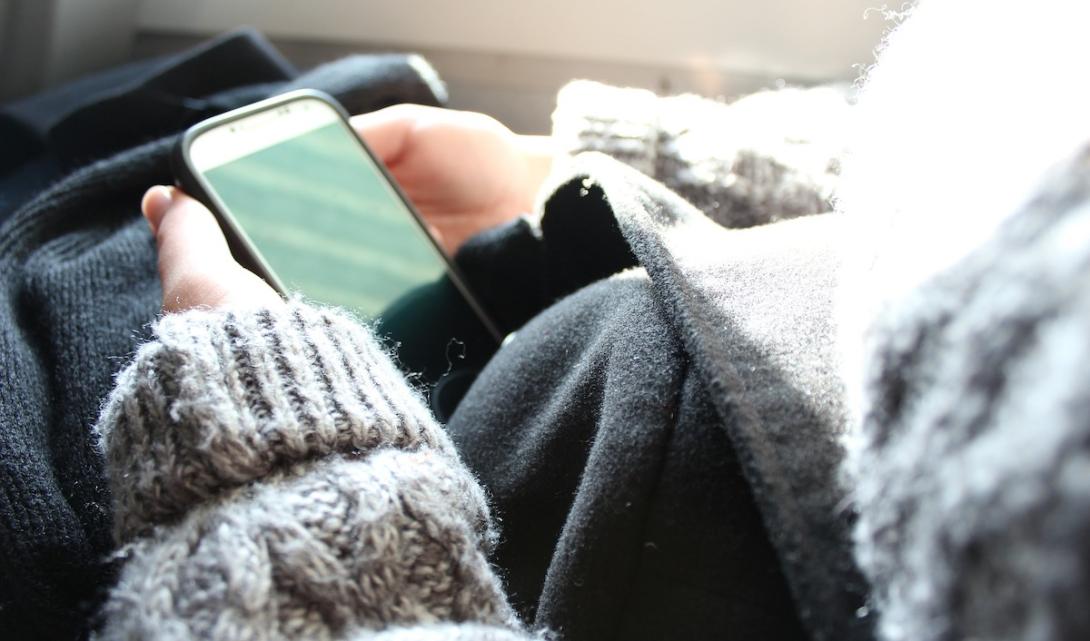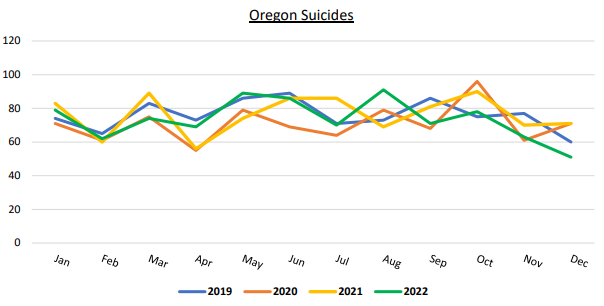
If you or someone you know is struggling with thoughts of suicide or a mental health crisis, call or text 988 for free, immediate support 24/7.
The new 988 suicide prevention hotline marked its first year in Oregon with a 33% increase in calls from people in crisis.
The Oregon Health Authority said Thursday residents had contacted the service 53,000 times since its launch on July 16, 2022 until June 30. That compares with about 32,500 people reaching out to the 10-digit National Suicide Prevention Lifeline the year prior, according to Dean Carson, a spokesman for the Oregon Health Authority.
Most contacts have been by phone, with about 5,000 people contacting the service via chat and about the same number through text, Carson said.
Call counselors have provided service in English and Spanish from the start, with interpreters available for other languages. On Thursday, the federal government also launched service for texts and chats in Spanish.
Get help
To speak to a counselor in English or Spanish, call 988. You’ll hear a prerecorded message, giving you the option to connect with the Veterans Crisis Line (press 1), receive support in Spanish (press 2) or get specialized support for LGBTQ youth and young adults (press 3). People with Oregon area codes who press “0” or stay on the line will connect with a counselor from Lines for Life or Northwest Human Services. Cell phones with non-Oregon area codes will go to a national call center.
To text or chat in English, type 988 or go to 988Lifeline.org
For Spanish, text AYUDA (help) to 988 or go online to 988lineadevida.org or 988Lifeline.org.
For a behavioral health telehealth session in English or Spanish, contact 800-923-HELP (4357). For hearing or speech impaired, call 800-487-4889.
Lines for Life, a Portland-based nonprofit, handles nearly 95% of the calls, while Northwest Human Services, which is based in Salem and takes calls in Marion and Polk counties, responds to the rest, the health authority said. They both have trained counselors available 24 hours a day, seven days a week who are “highly compassionate, highly trained,” said Dwight Holton, CEO of Lines for Life.
He told the Capital Chronicle the service has been a lifesaver for people in a crisis, with counselors responding to calls, texts and chats within 20 seconds. They resolve crises 97% of the time without needing to call in emergency services, law enforcement or a mobile crisis unit by working out a plan with the person to get more help, he said.
“What counselors who work on Lines for Line and (Northwest) Human Services deliver is hope,” Holton said, “and not some kind of Hallmark card sentiment, but an evidence-based strategy for supporting people who are in crisis.”
He said the service, which stems a 2020 congressional bill, has helped reduce the stigma nationwide of acknowledging mental health problems and is spurring more people asking for help.
“In creating 988, we as a nation, as a state and as a community have said it’s OK to struggle and get help,” Holton said. “No one is embarrassed to call 911 when there’s a police or fire emergency. Now 988 is helping people so that they aren’t embarrassed to reach out for help for their mental health.”
For years, Oregon has had one of the highest suicide rates in the country. The increased use of 988, however, does not appear to have decreased the overall number of suicides in the state, judging from state data. An April report from the Oregon Health Authority said deaths by suicide in 2022 were similar to previous years, though there was a downtick at the end of the year.
“Mortality data is still being processed and numbers for recent months may change,” the report said.

In 2021, the state started planning for the 988 service with the Legislature approving $7 million for staffing Oregon’s two 988 call centers and about $40 million for community mental health programs including mobile crisis services, which now exist in every county. This session, lawmakers approved $32.4 million more for the 988 system and passed House Bill 2757, which will create a trust to pay for the system in perpetuity. It will be funded by a 40-cent tax on cell phones, landlines and computer phone services starting in January. Gov. Tina Kotek signed the bill on Thursday.
“We really made a strong effort to invest in and build a major infrastructure on the front end and be ready for this,” Holton said.
State officials consider the 988 system a key part of enhanced behavioral health services in Oregon. The money approved this session for 988 was among nearly $180 million in funds approved by the Legislature for residential services, community treatment and overdose prevention efforts. In 2021, the Legislature earmarked $1.3 billion for mental health and addiction services.
“To have a resource such as 988 to help people right now is tremendous, as is Oregon’s historic choice to embrace a broader vision for the future of our 988 crisis system,” said Chris Bouneff, executive director of the Portland-based nonprofit National Alliance on Mental Illness Oregon. “With 988, we finally have a focal point from which to develop the system and resources that will act like the behavioral health care system that people need.”
Those seeking help remain anonymous, and counselors work with the person on a plan of action, which could be as simple as calling a loved one or setting up an appointment with a therapist, Holton said. The state offers behavioral health counseling, with three 45-minute telehealth sessions for free for anyone in English and Spanish.
“It’s kind of like an employee assistance plan for everybody,” Holton said. “It’s a great bridge plan.”
Those in need don’t have to wait long for a session, which can help them get through a rough patch before they can see their therapist.
In a small minority of cases – 3% – the call takers have to call emergency services like Project Respond in Multnomah County or CAHOOTS in Eugene to prevent the person from harming themselves or when they request help. About 10% of callers ask for a follow-up, with a counselor checking in with the person in a few days or as needed, Carson, with the health authority, said. And in about 10% of cases, counselors refer the person to other services, such as Child Welfare, food and housing assistance and peer support.
Carson said the top three issues cited by callers are mental health concerns, family/relationship issues and suicide. Although calls ebb and flow, there’s usually an uptick in the spring, though specialists don’t know why.
